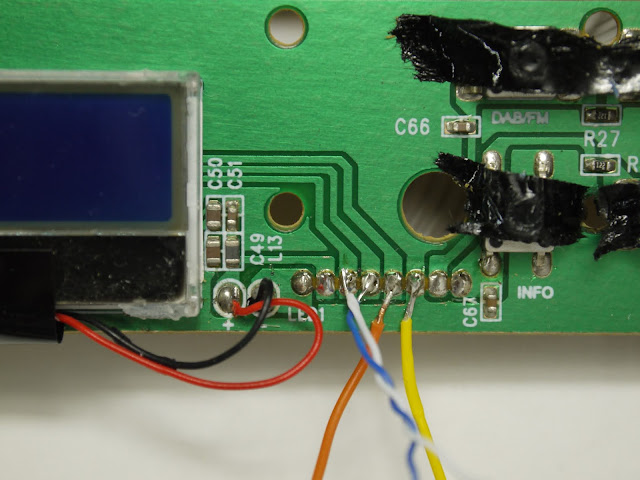Reverse Engineering an LCD Display
I have a DAB radio which started to irritate me in various ways. Finally fed up with it, I bought another radio and decided to free up the space that the old radio takes up by tearing it down.
This is the DAB radio taken apart:
Nice display 16 char 2 line dot matrix.
Looking at PCB, it seems to have a three wire interface:
Scoping up the lines, one looks like a reset:
Others have data and clock:
Looking at the data, there's a different voltage level in there. I2C has an ACK which comes from a different computer to the one generating the data, so different level makes sense.
As this is probably I2C, switching on the decoder in the scope shows what is being sent:
Now we know the I2C slave address and some data. It does look like I2C. What device is it though? Searching the internet gives a few options. It could be a standard I2C GPIO expander attached to an LCD controller.
After power up there's an initialisation sequence:
That's the first byte in a longer sequence that goes:
0x39, 0x14, 0x7f, 0x57, 0x6b, 0x0c, 0x01,0x06, 0x38, 0x40.
There also seem to be two bytes for every bte of data transmitted, the initialisation bytes have a ledaing byte of 0x00, the data bytes have a value 0f 0x40.
Using this sequence we could maybe find the controller that is used. After more searching there's a possible match. The Winstar WO1602I-TFH- AT module has an initialisation sequence that is similar. The datasheet shows the initialisation sequence to be:
0x38, 0x39, 0x14, 0x74, 0x54, 0x6f, 0x0c, 0x01
This is similar enough to probably be the same controller with a slightly different LCD attached. The datasheet is useful. It says the controller is an ST7032, and the first byte of the two that are sent is a control byte. It holds Co and RS. RS is the command/data bit, while Co is a continuation bit that allows more than one control byte to be sent. The datasheet shows the RS bit as bit 6 which matches the trace on the scope. It looks like this is indeed the controller in the display.
Excellent, we have enough data to probably drive this display.




















No comments:
Post a Comment